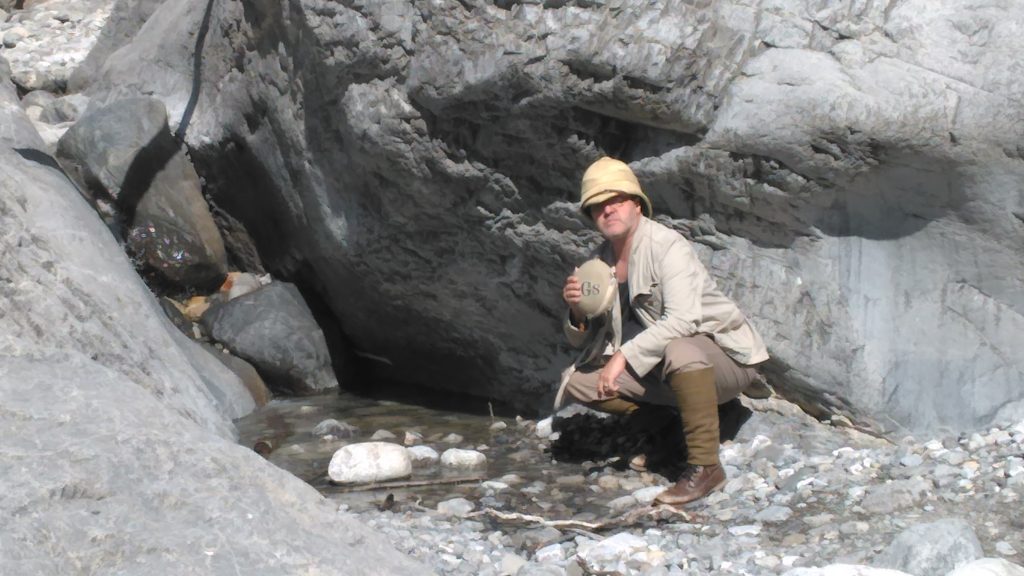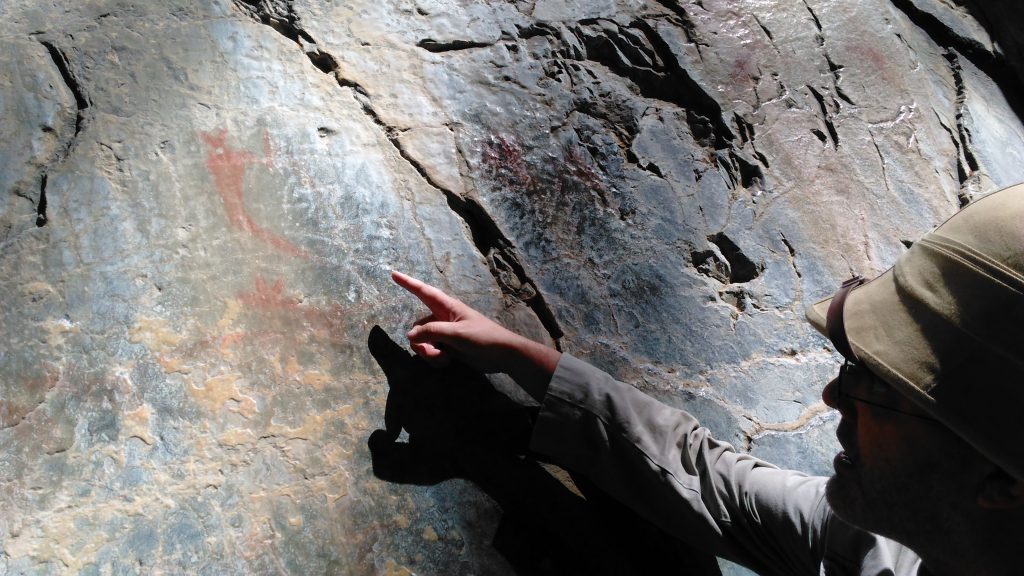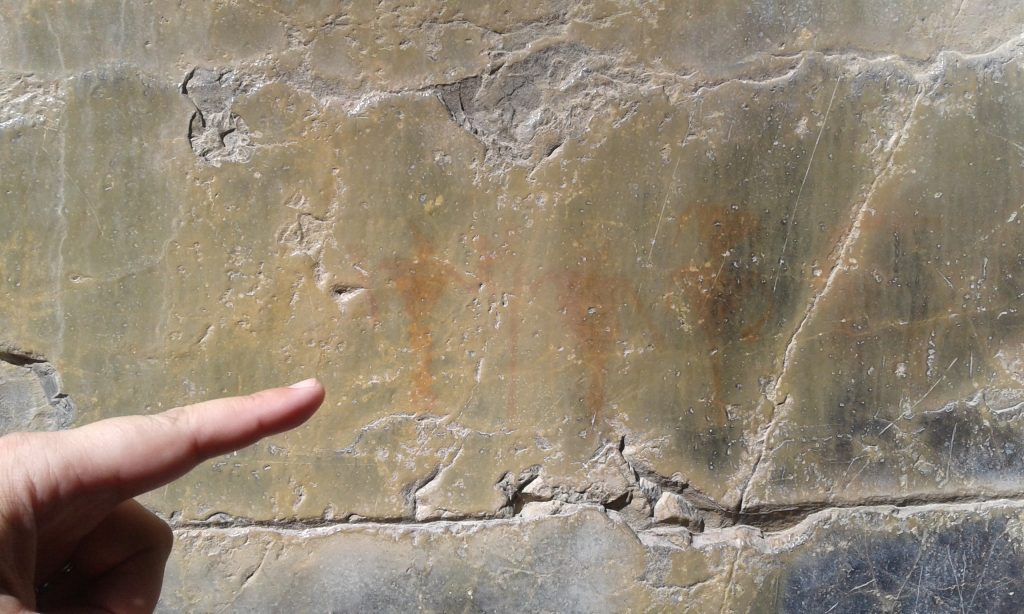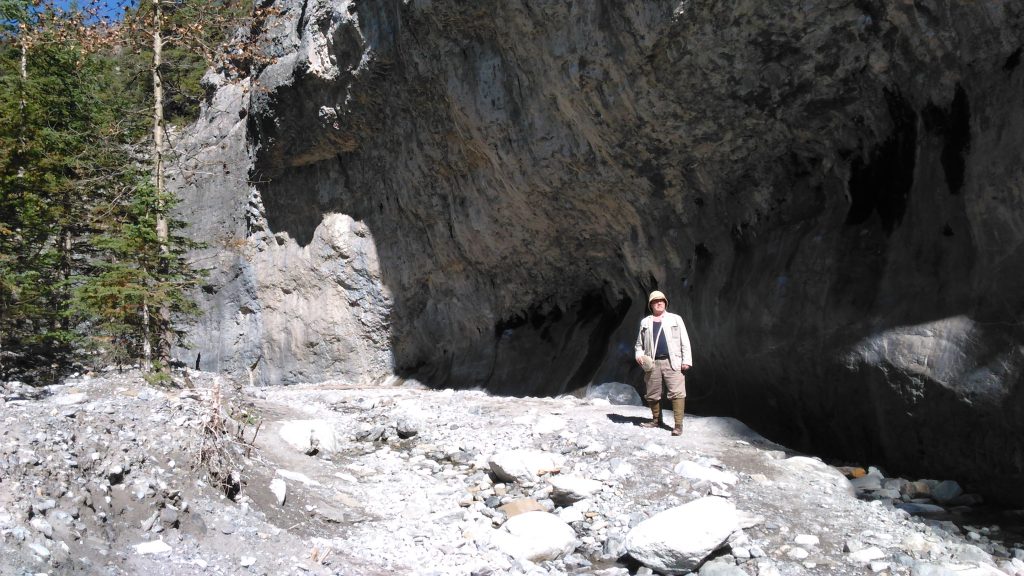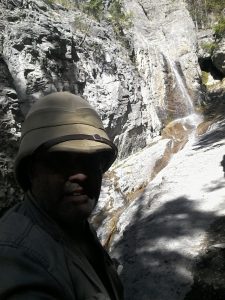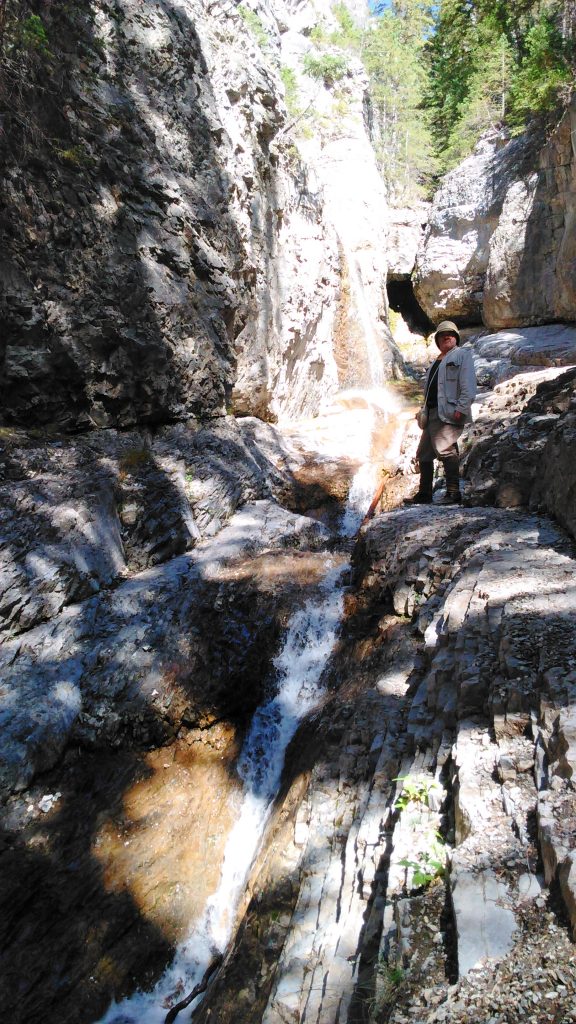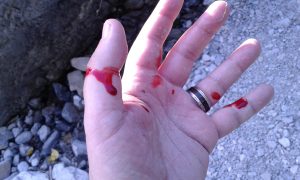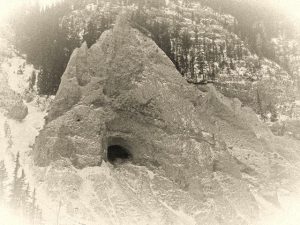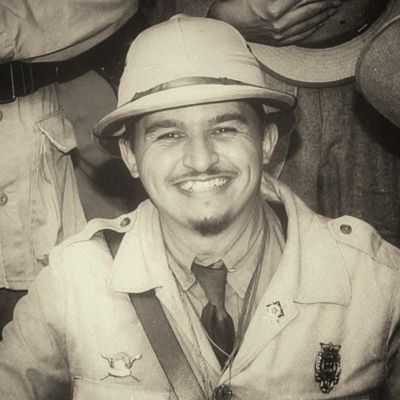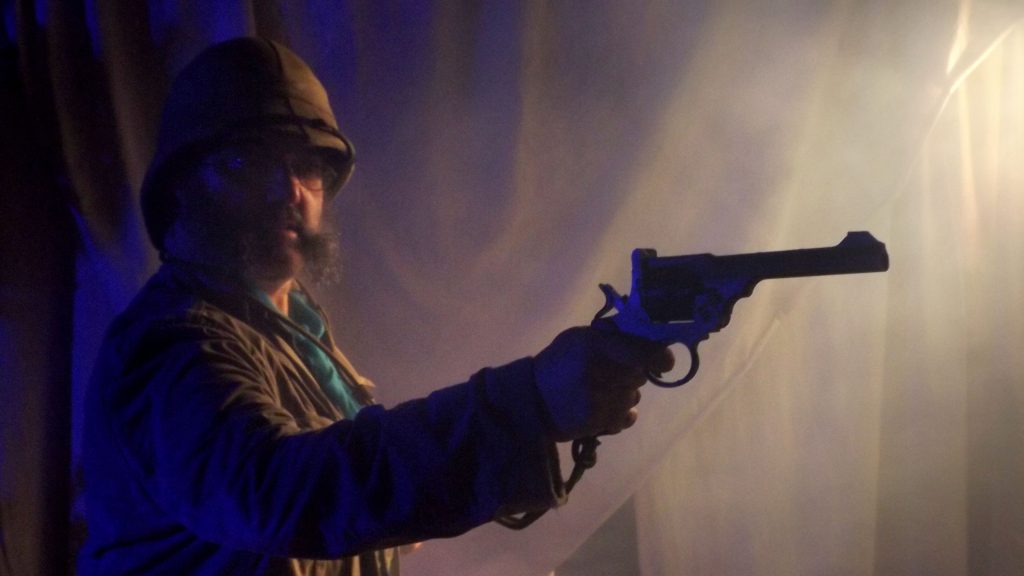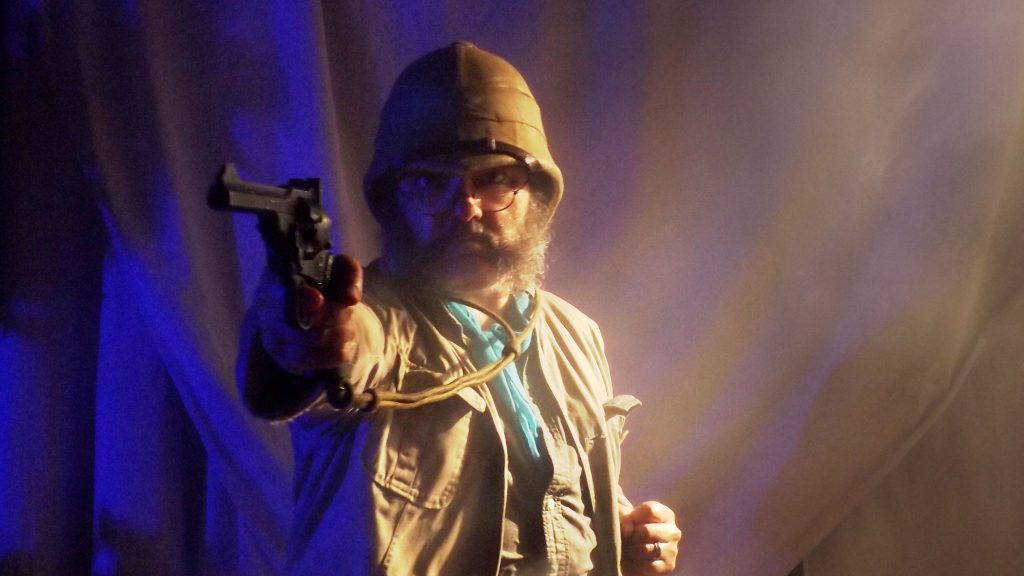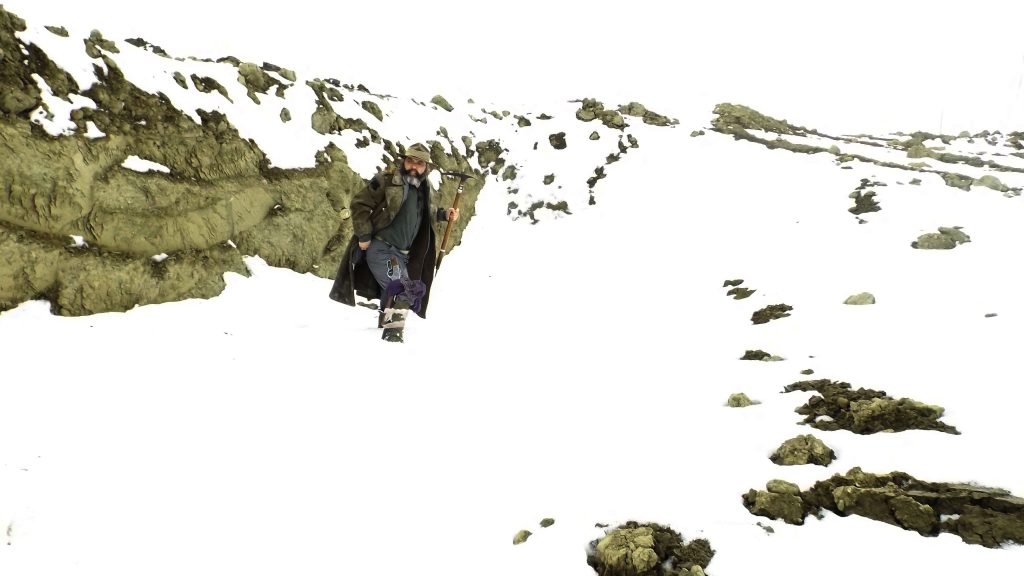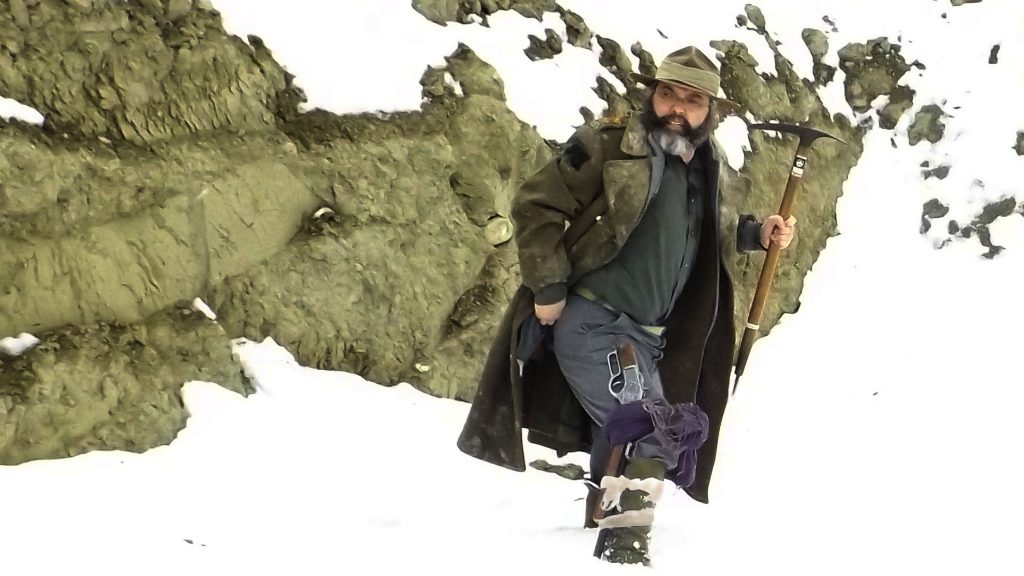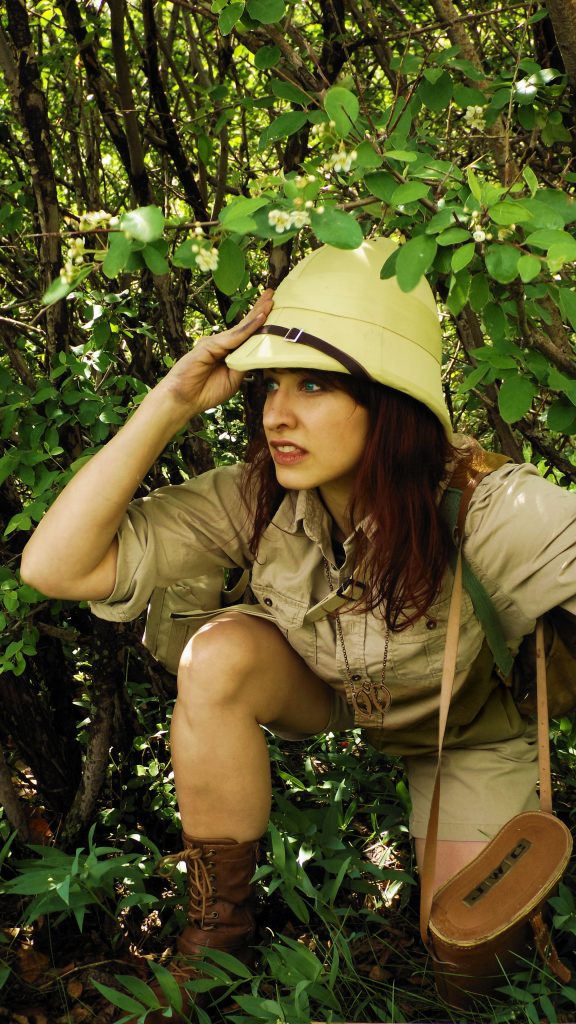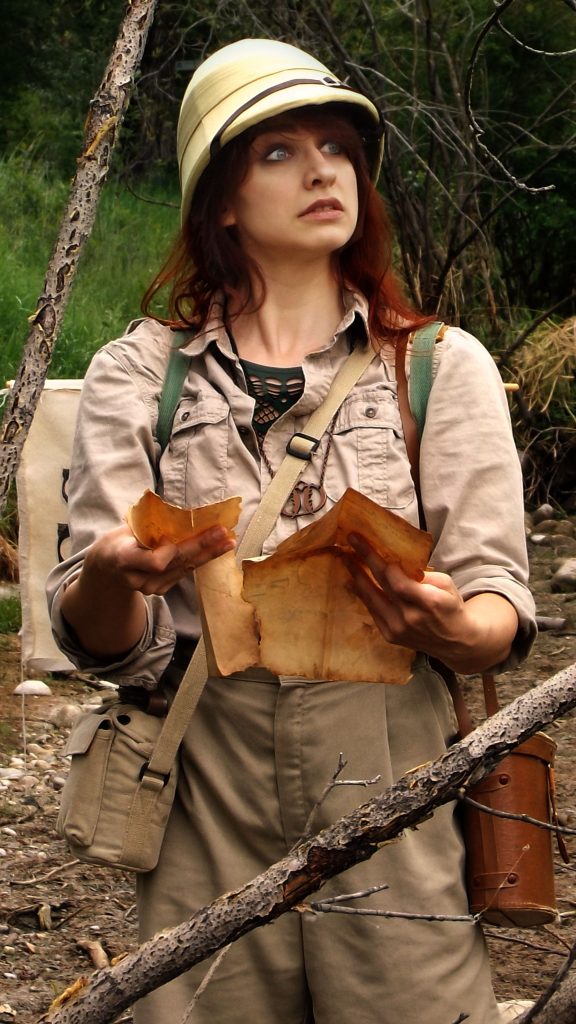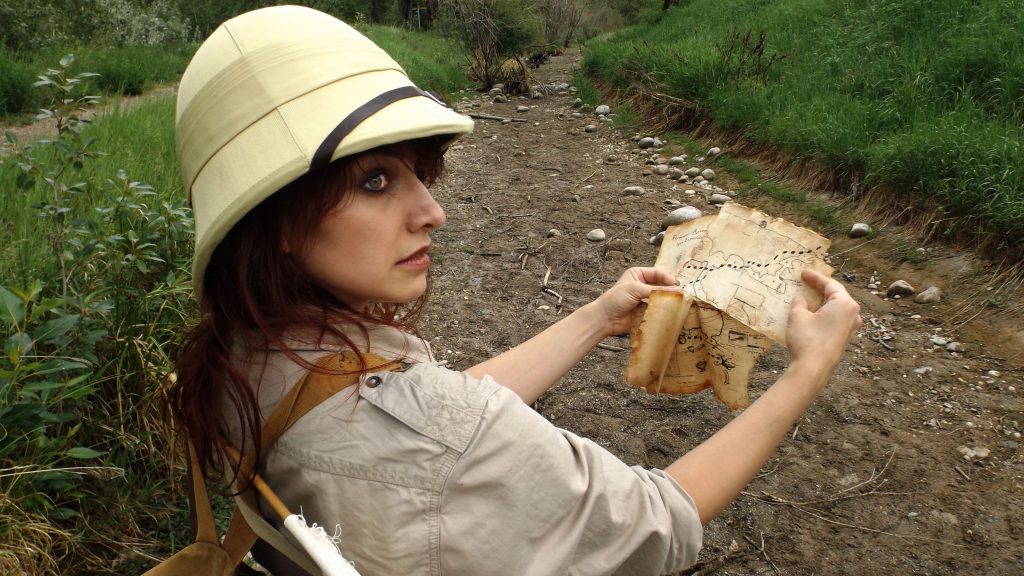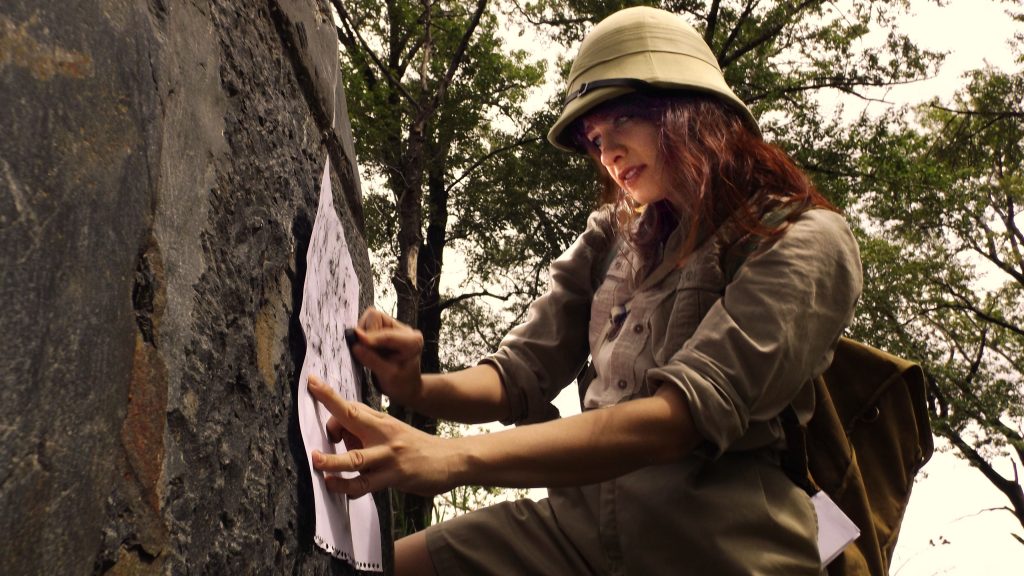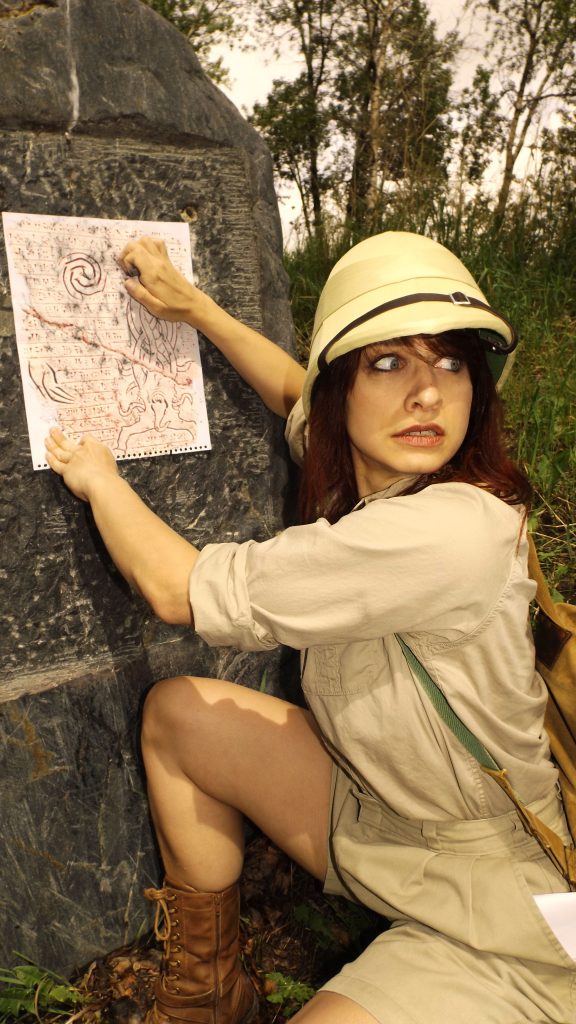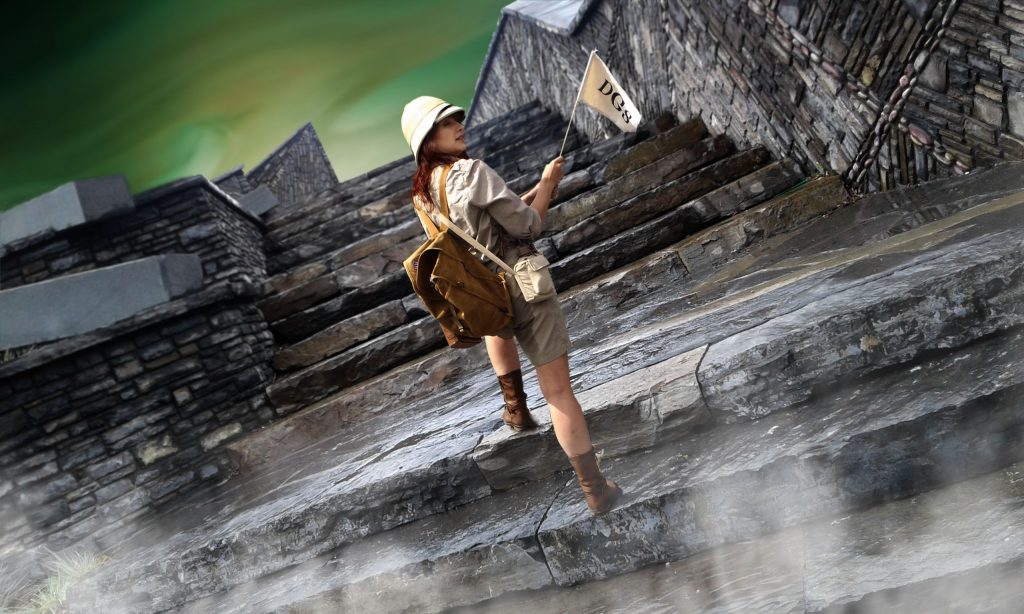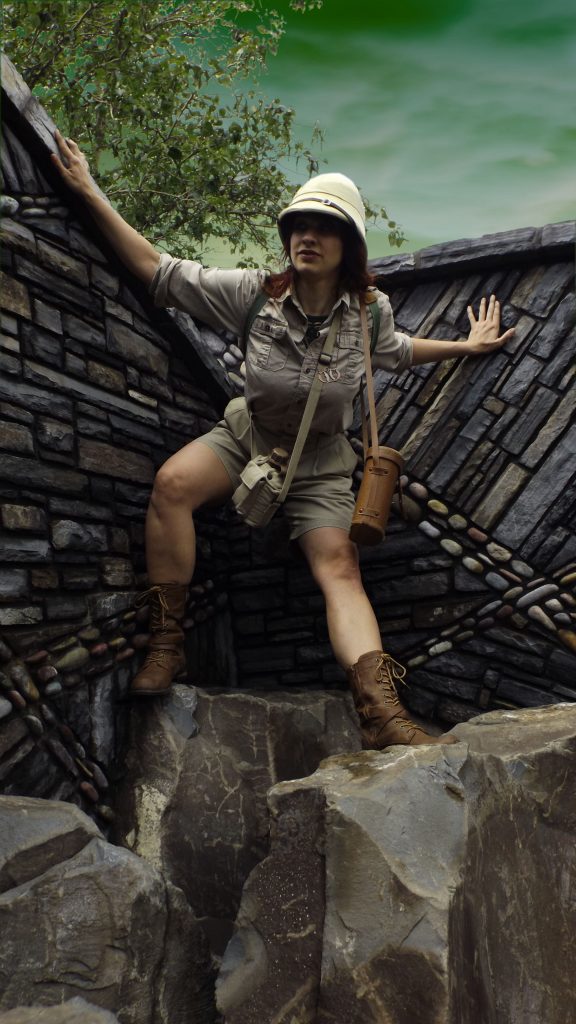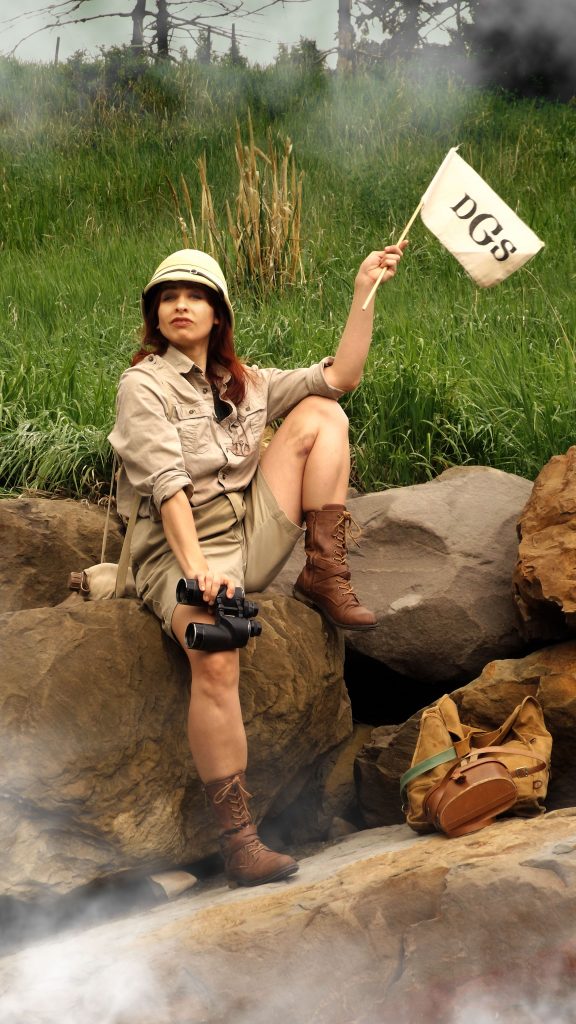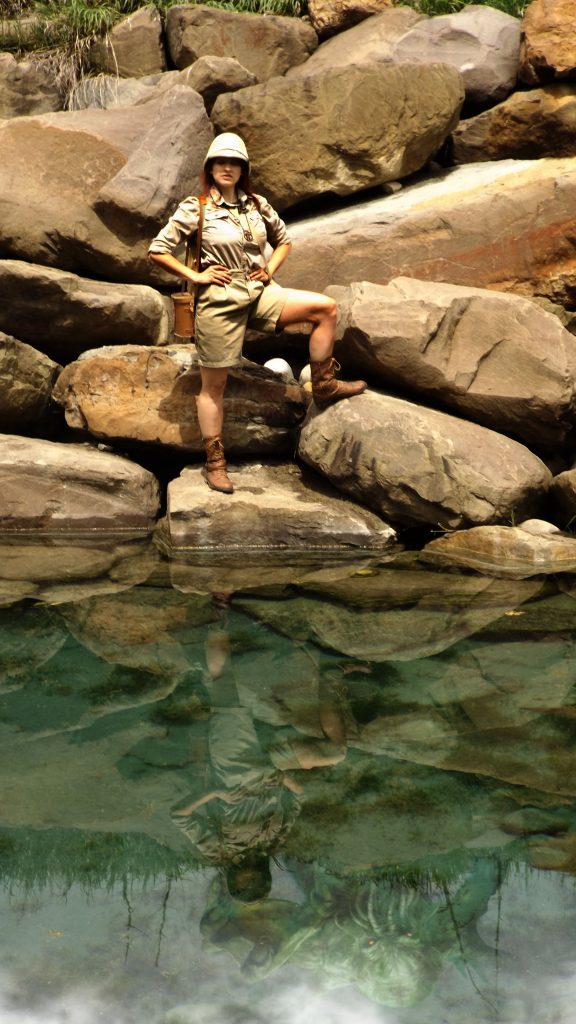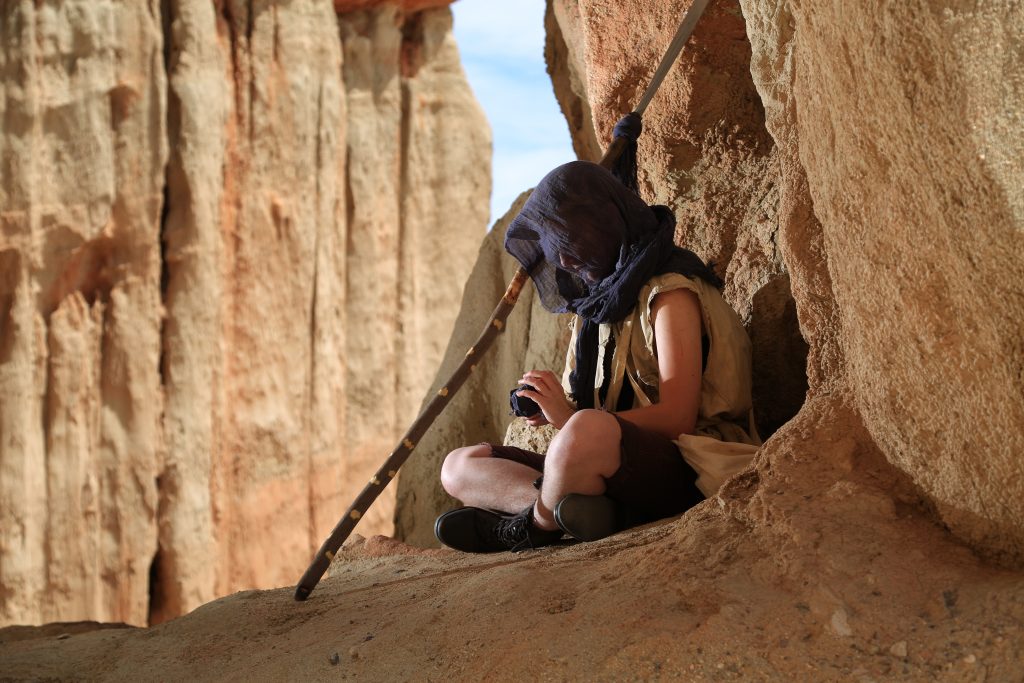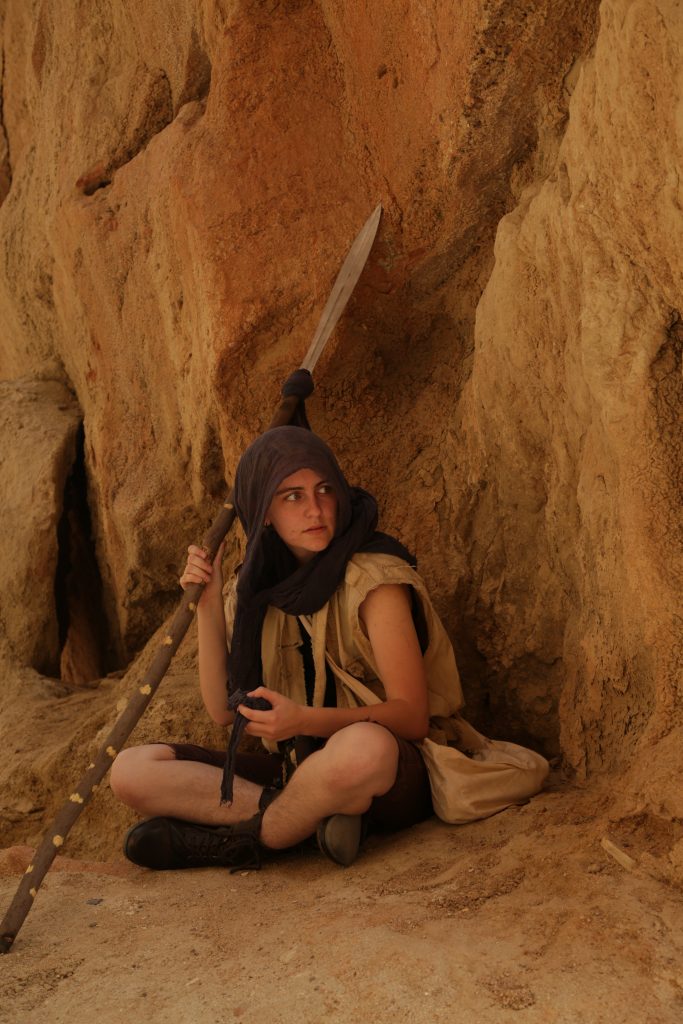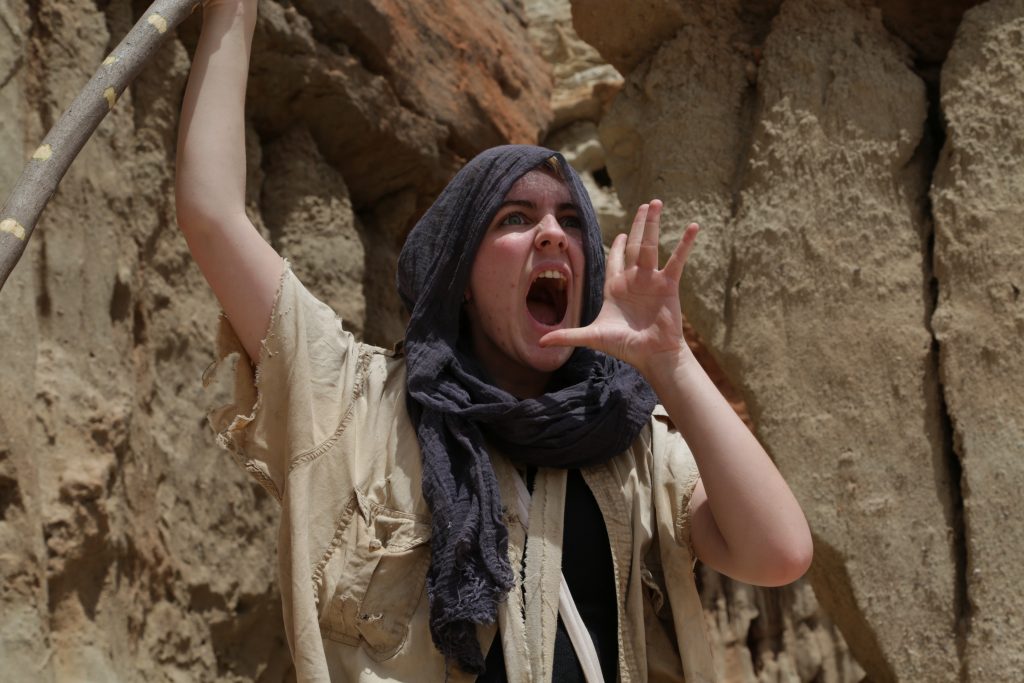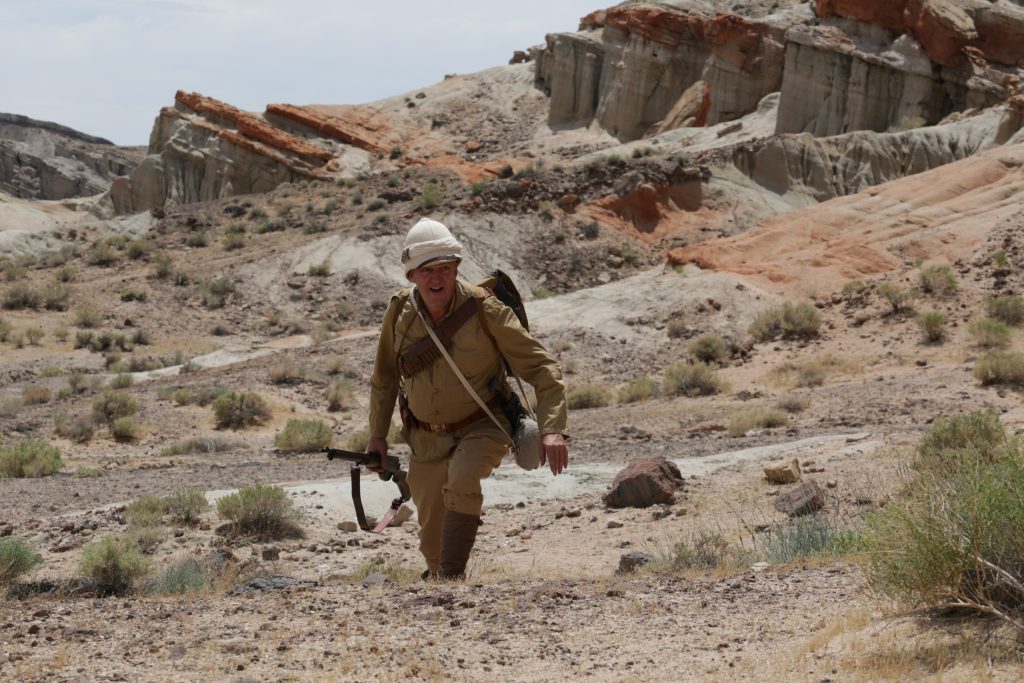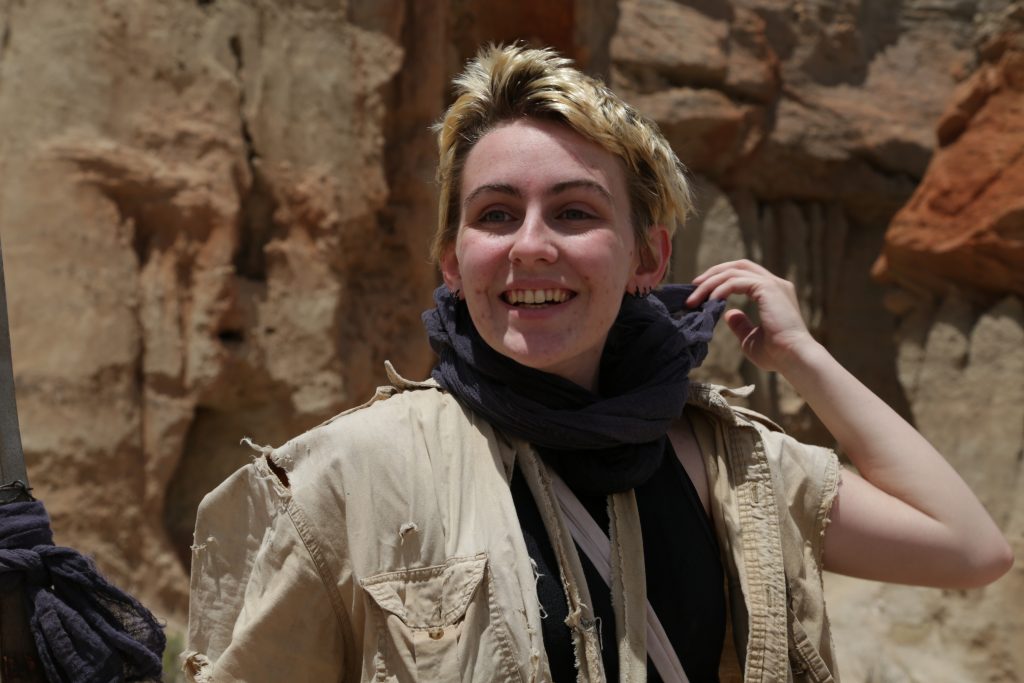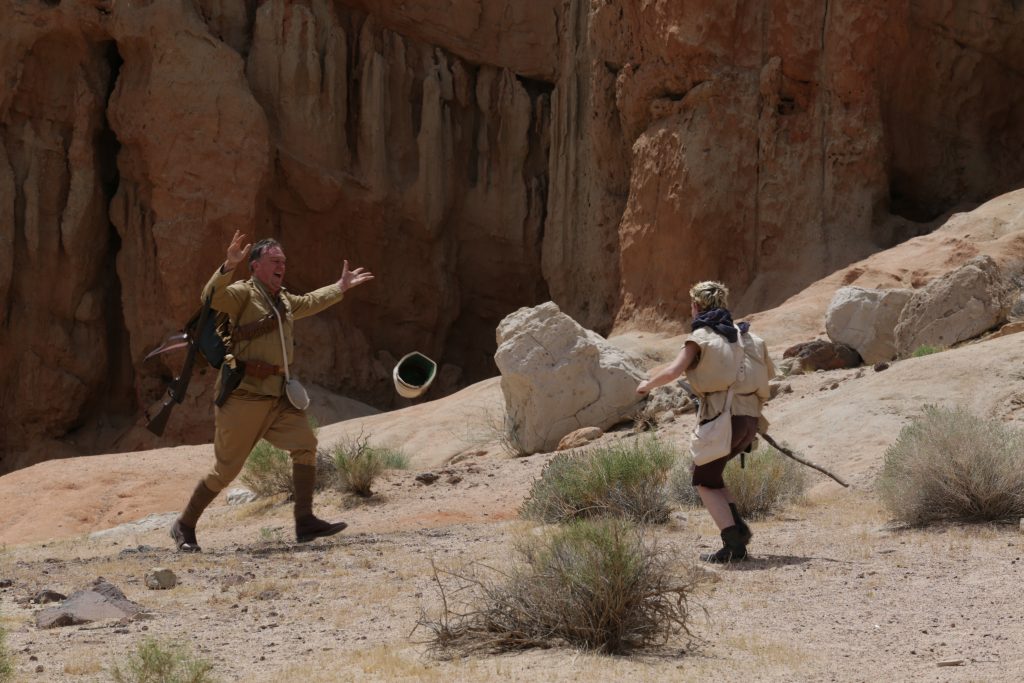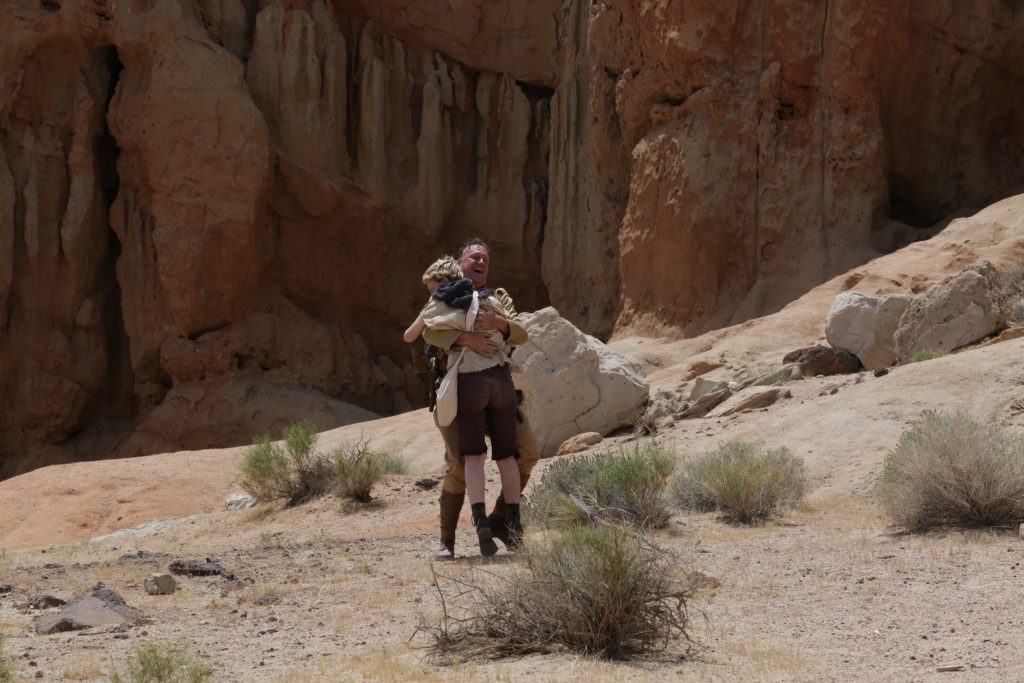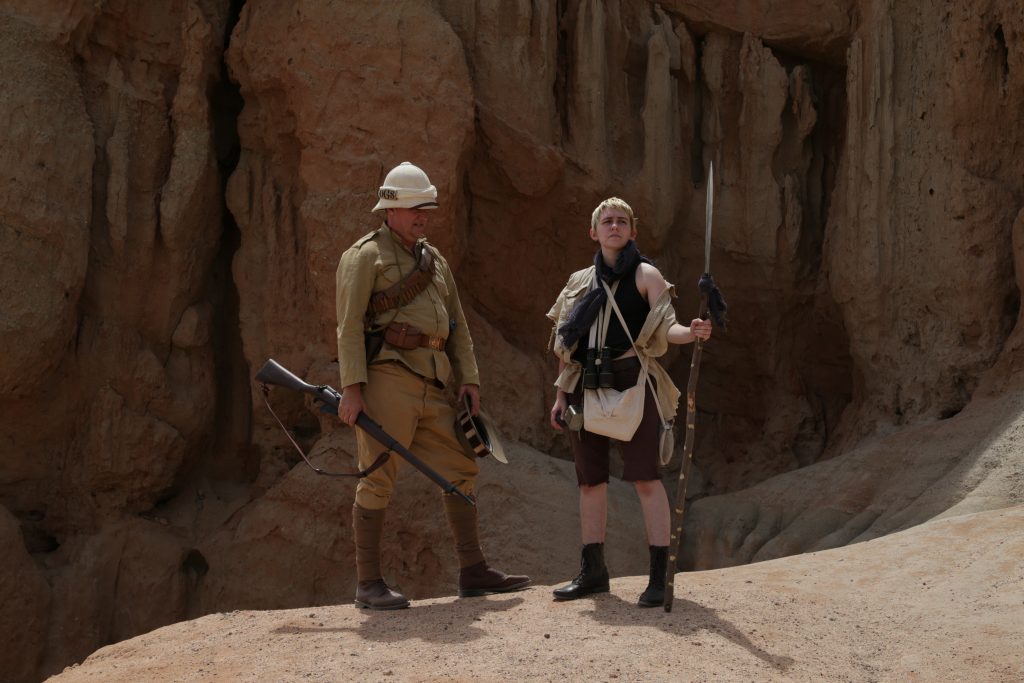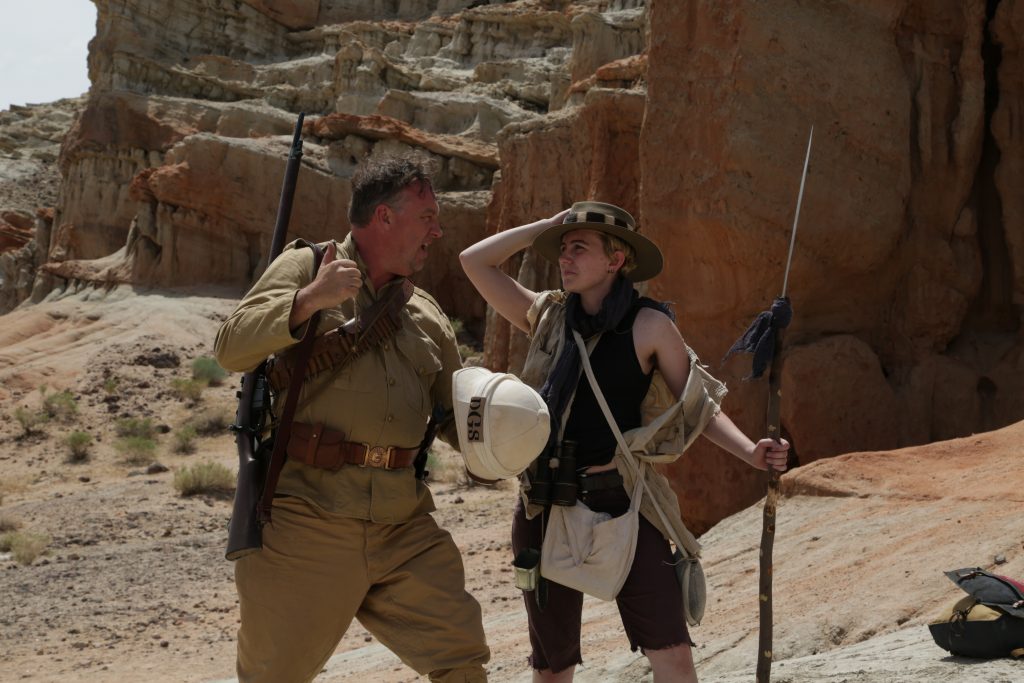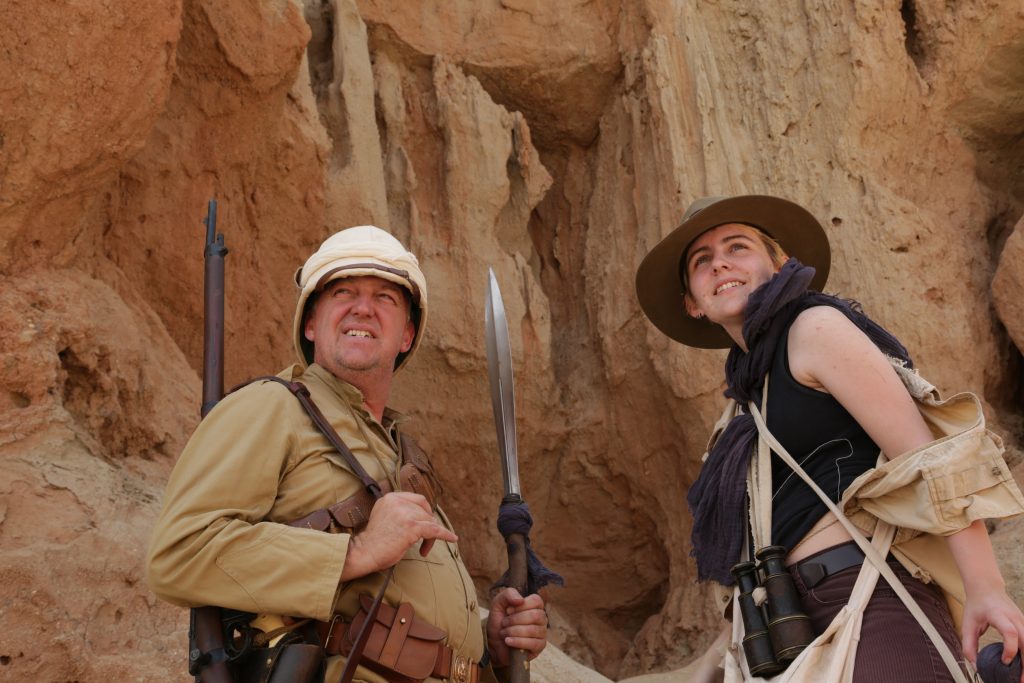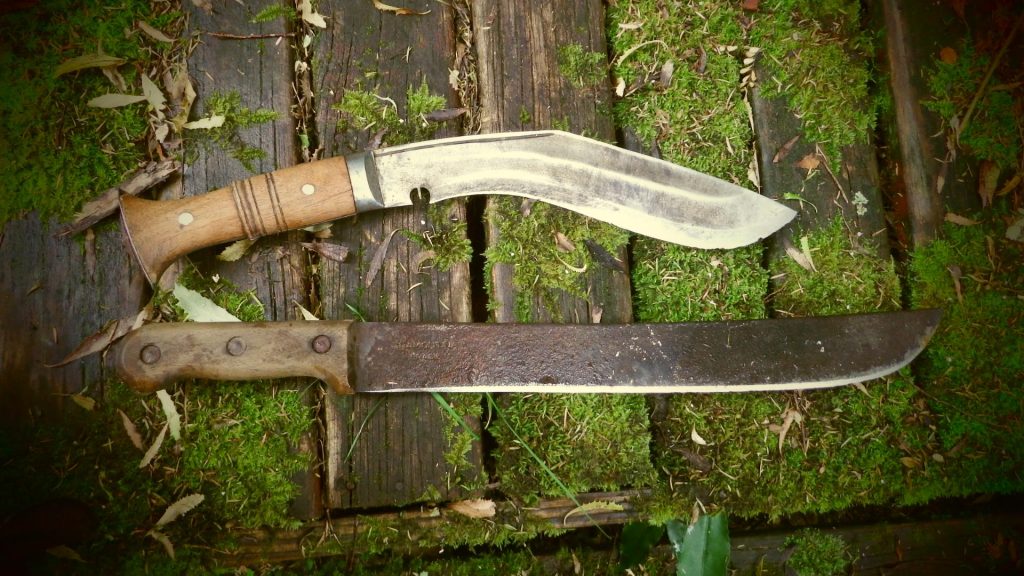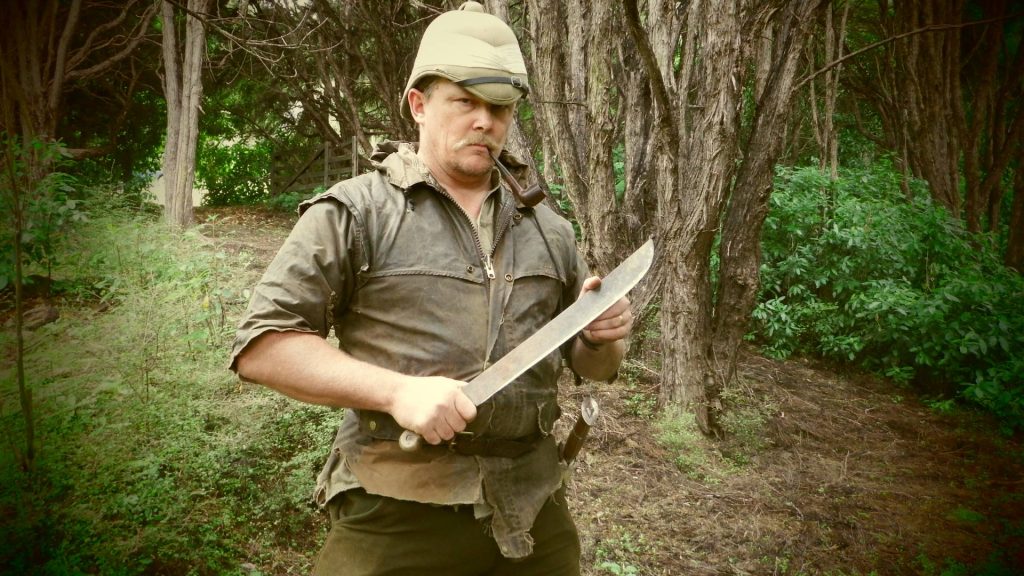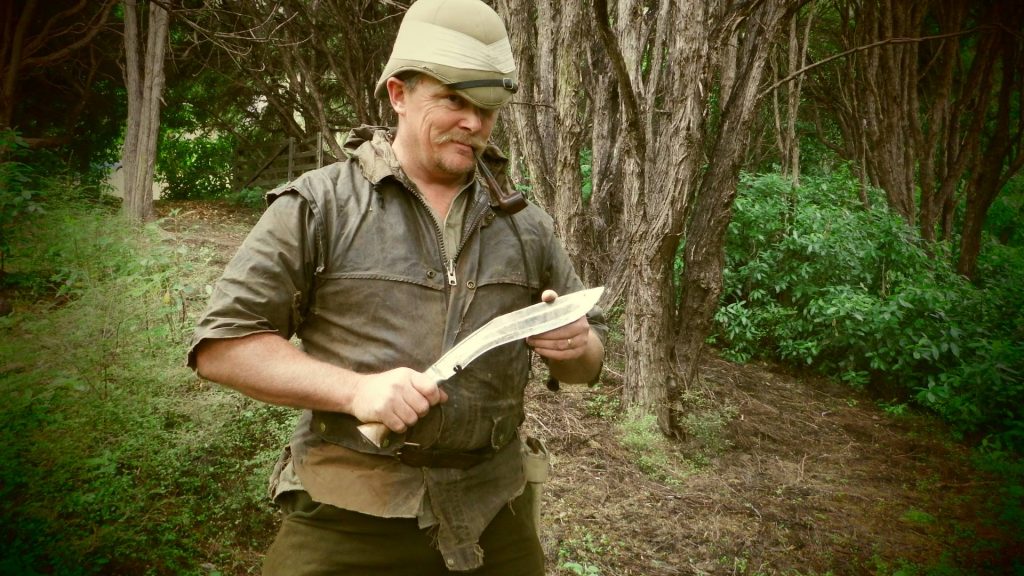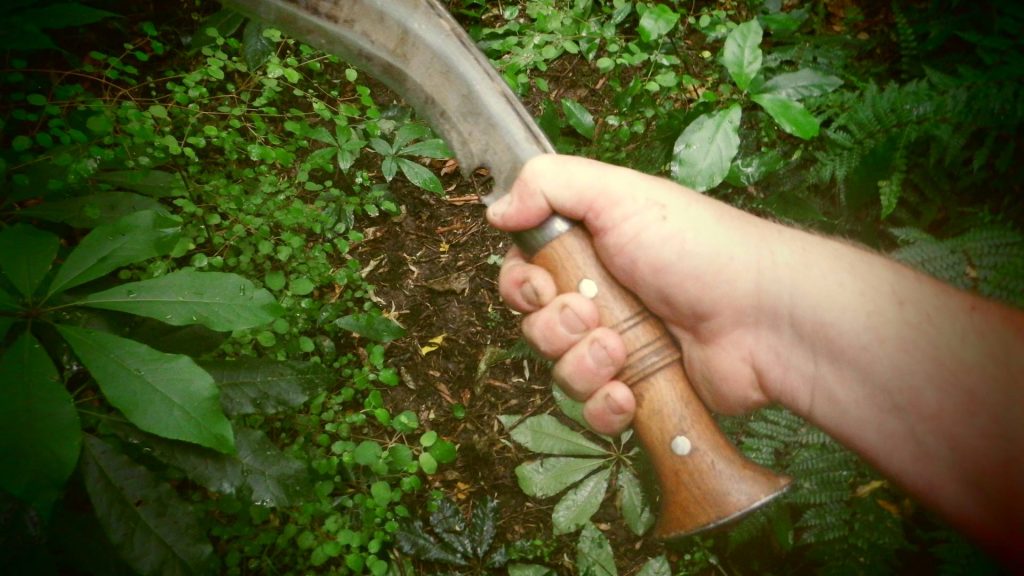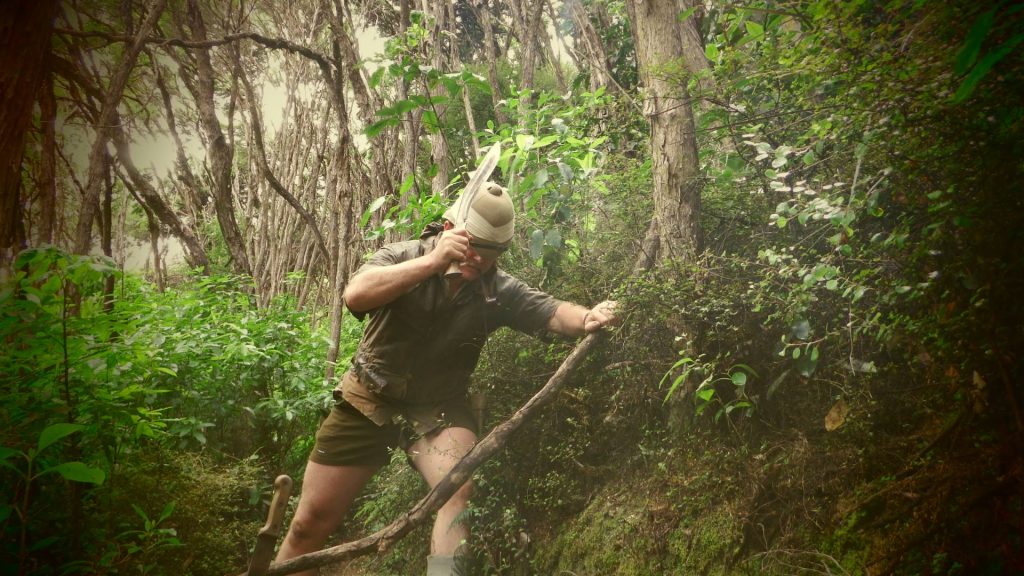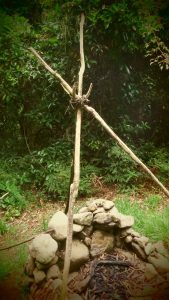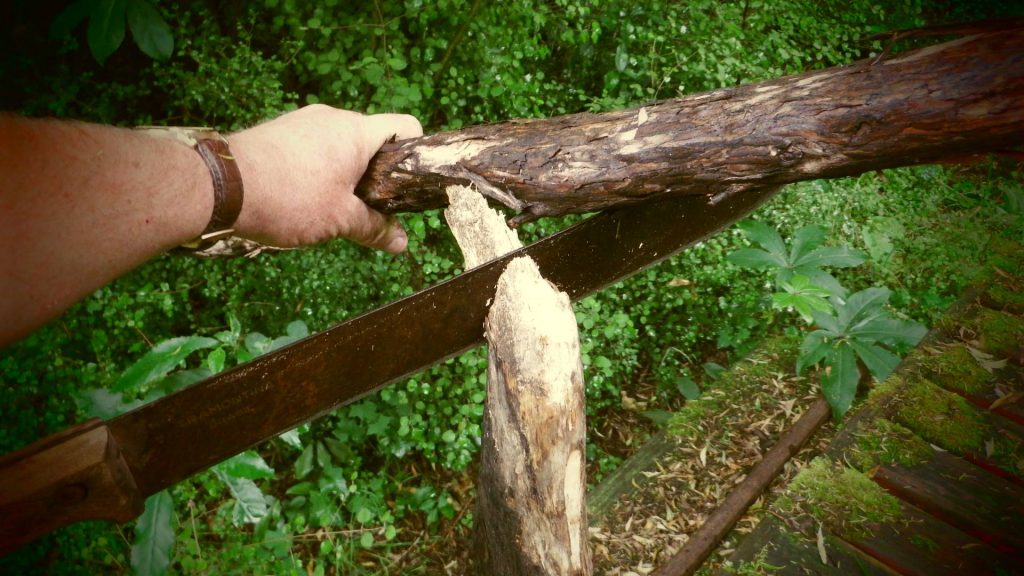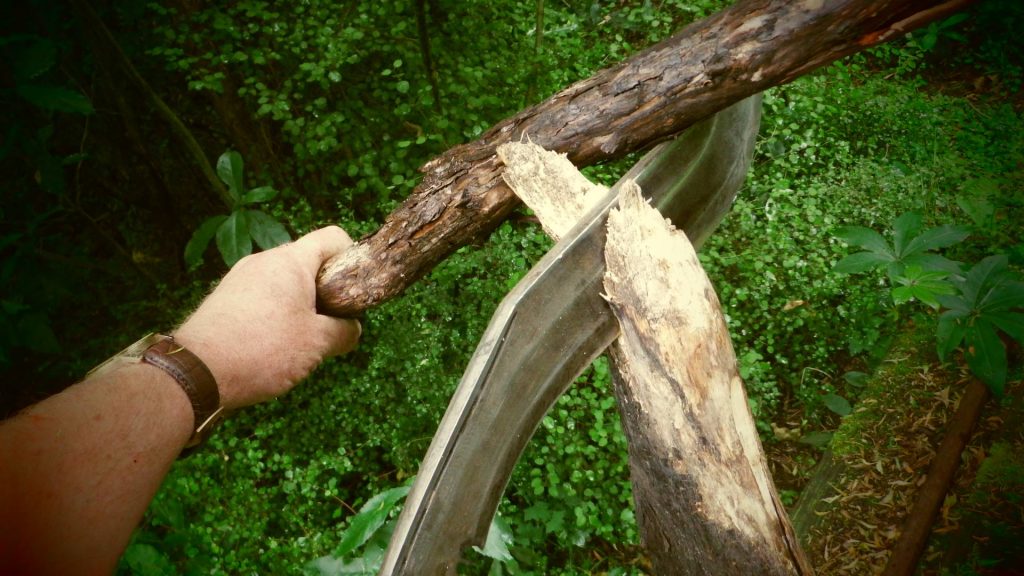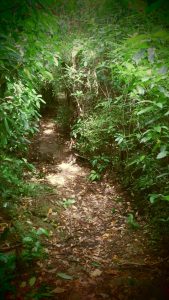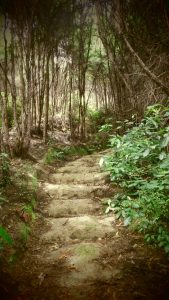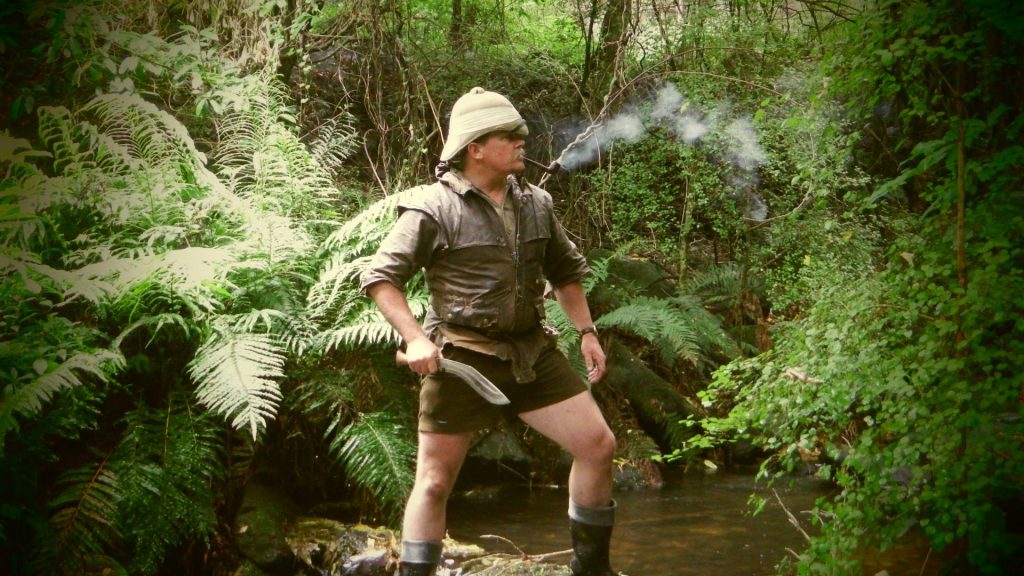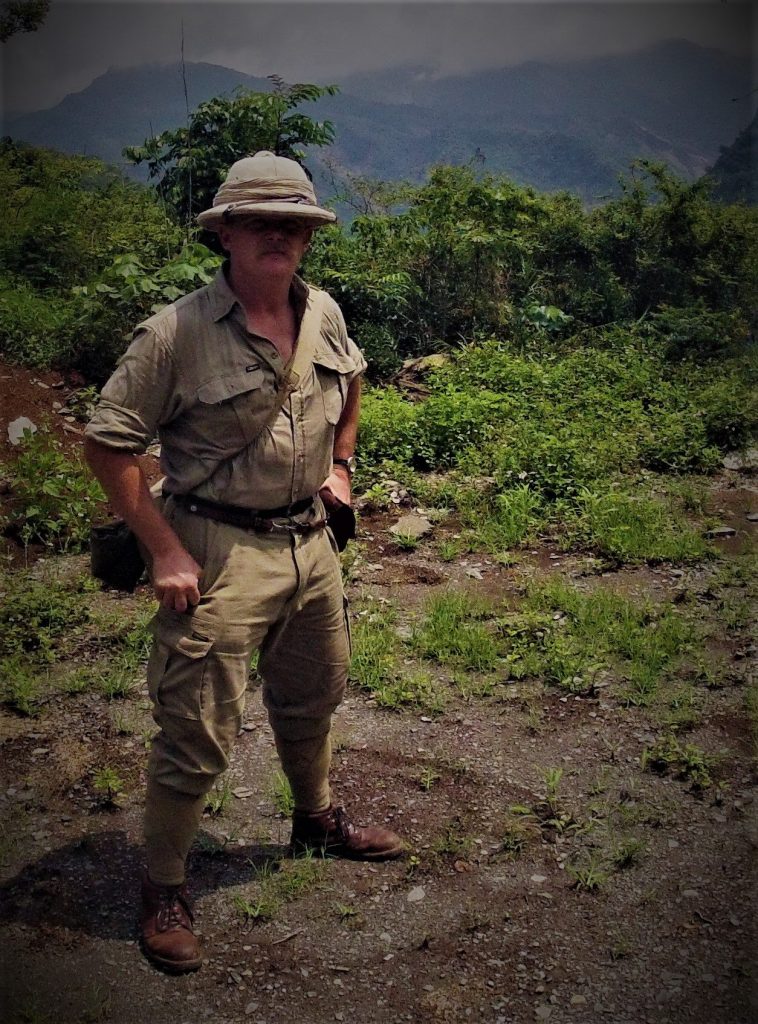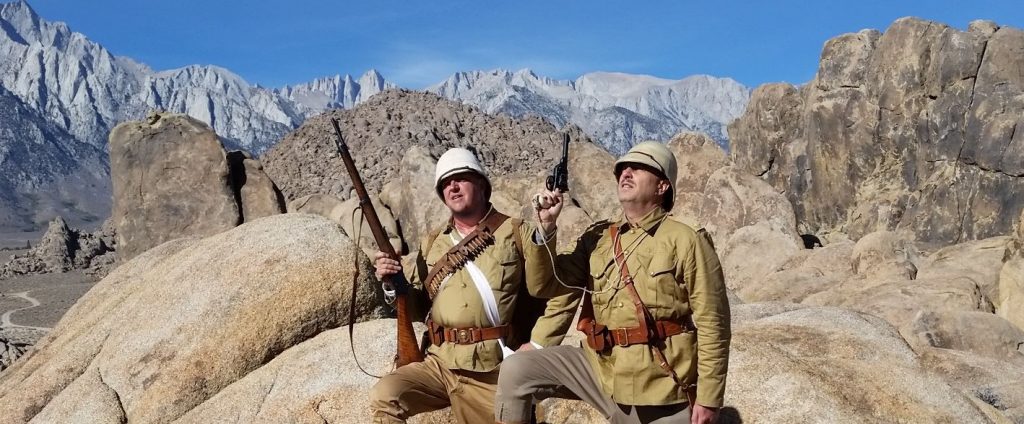
After wrapping up an adventure on the Horn of Africa, and bidding farewell to the surviving team members, I found myself drawn back to the area of the Northwestern Frontier where Jackal had been investigating recently re-opened portals.
After a few days of rail travel, I stepped off the train at a rustic town and made my way to the military post at the foot of a saw-toothed range of granite mountains. I employed my usual ruse of presenting forged documents and credentials to the commander, and soon found myself in the meagerly appointed bachelor quarters, with a Royal Engineer by the name of Captain Finnley. One night, well in his cups, Finnley unveiled me in a scheme of his to locate a forgotten shrine in a valley that the locals shunned.
We secured a couple of ponies and made off one morning “to re-survey the valley, in order to correct errors found on the maps”. Finnley strapped the survey gear to his pony, and added some gray earthenware globes to the load, covering them with canvas. “What are those for?” I asked. “Oh” Finnely said, waggling his eyebrows “All sorts of things!”
We threaded our way through a maze of grotesquely shaped hills that guarded the entrance to the pass, eventually hobbling the oddly nervous ponies, and secured the superfluous survey gear near a copse of sparse trees. Here there began a curious trail of purplish stone chips. The sun beating on the surrounding stone, amplified the heat of the day, and caused ripples in our vision. Finnley brought forth his crude map and indicated some high ground ahead of us, as the location of the shrine. I slung my pack and carbine, placing two rounds in the fingers of my left hand, while Finnley stuffed his valise, with some of his globes and fuses. We stepped through a stone archway then began up the overgrown trail on foot. The chips of purple stone seemed to grow in number. “This is not like the native stone.” Finnley noted, around his cigar “Seems like a violet toned basalt. I wonder where it came from?” Truth be told, I was too busy scanning the copious nooks and hollows in the surrounding rock for bandits to pay much attention.
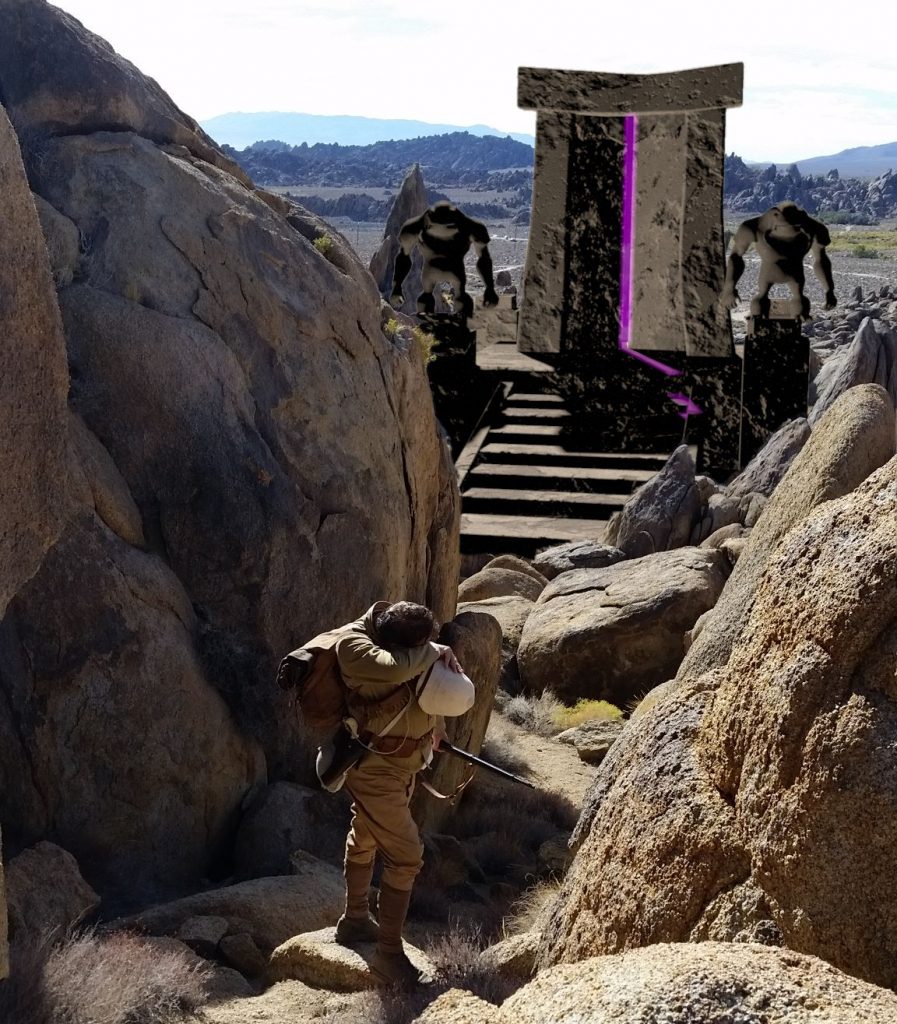
As we sweated our way up the draw, the trail started to circle the base of a flat topped hillock. The aubergine-hued path passed into the shadow of the hill and shrouded by a jumble of sickly gray undergrowth, a triangular relief in the stone wall was soon revealed. Even in the shade the air was furnace hot, and our vision swam in the heat waves. As we drew closer to the aperture, I could see that the opening was hooded by two slabs of stone, and a kind of sentinel carved of the strange mauve stone squatted by each side of the opening. I pushed the brush out of the way with my boots and rifle butt, and uncovered more of the opening and examined the carved beasts holding up the corners of the stone slabs. Each figure appeared to be holding the slab up, straining in effort, the lifelike carving seemingly stained by pomegranate juice. Finnley unfurled his cloth map again, and smiled, “Those purple bastards must be the gargoyles on this here map!”
Now that some of the brush was cleared away, plainly could we see doors carved in the rock wall. I attempted to pry the portal open with my fingers, then tried levering it with my bayonet, with no success. Finnley pushed me back, with a wink, “Don’t worry, matey, I have just the thing for stuck doors.” and wedged one of his globes into the seam. I stepped behind a nearby boulder. Slinging his bag around his back, Finnley took the cherout from his mouth and touched it to the long fuse.
The burning fuse hissed and spat as it burned toward the door then there was a thunderous crash.
I must have been stunned as I stood up, eyes goggling and ears ringing, I was aghast to see Finnley firing his revolver into a horde of rampaging purple gargoyles, as they poured out of the portal. Ten or so of the creatures had issued forth, and the two we had seen outside now stretched and contorted themselves into living vengeance!

“Start firing already!” Finnley shouted, as he broke open the action on his revolver, fumbling for more bullets at his waist.
My Martini barked in my hands, and I cranked open the lever and slid another round home. I aimed at the center of one of the darting masses and fired, watching as the round smacked into a purple leg, cracking and splintering it off, but the creature kept coming, limping and rolling.
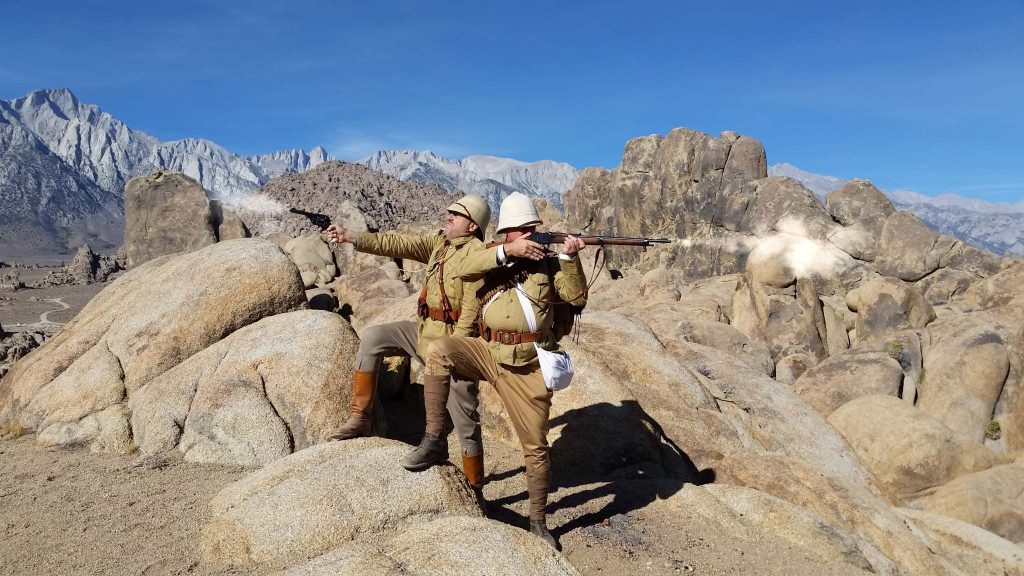
Finnley closed his now reloaded pistol and fired point-blank into one the creature’s heads, and the thing flew back, shaking flinders of living stone from the injury. The head snapped off at the point of impact and stopped, before it vibrated and began rolling uphill toward us. To our horror, the broken off body limped its way to the head, then grasped the’ decapitated crown and hurled it at us! It howled in a thin scream, right past us, and into the ravine below. “That’s for my old gaffer!”, Finnley called at the screeching head. I gritted my teeth and pulled a few more rounds from my bandolier.
I spied, at the portal, a taller, different creature, with a sort of diadem at its throat, who through gesture and sound, seemed to be directing the others. Before I could take a shot at it though, two other creatures swirled around me, and I fought them off with bayonet and rifle butt. Finnley was reloading again, and we backed toward each other.
“This is my last charge of bullets. We’ll never make those ponies now!” Finnley advised, taking aim. I looked south, the trail back, and saw them starting to come over the rocks toward us. I took another two shots, blasting chunks off the closest ones. “How’s your bowling arm!?”, I shouted, indicating the creature with the medallion.
Finnley let his pistol hang from its lanyard, then pulled a globe from the bag. “Think you can hit it!?!”, he intoned, cocking his arm.
I closed the lever on my carbine, aiming toward the boss-creature “One way to find out!”
Finnley underhanded the grenade toward the portal, the creature filling the doorway. I tracked along as it arced and just before it hit the creature I fired.
The creature staggered briefly as my bullet hit the diadem, the stone separating from the gold setting and dropping before the grenade struck the purple chieftain in the chest and fell to the feet of the creature
“Some shot you are!”, yelled Finnley angrily who took off his pith helmet and started batting me with it.
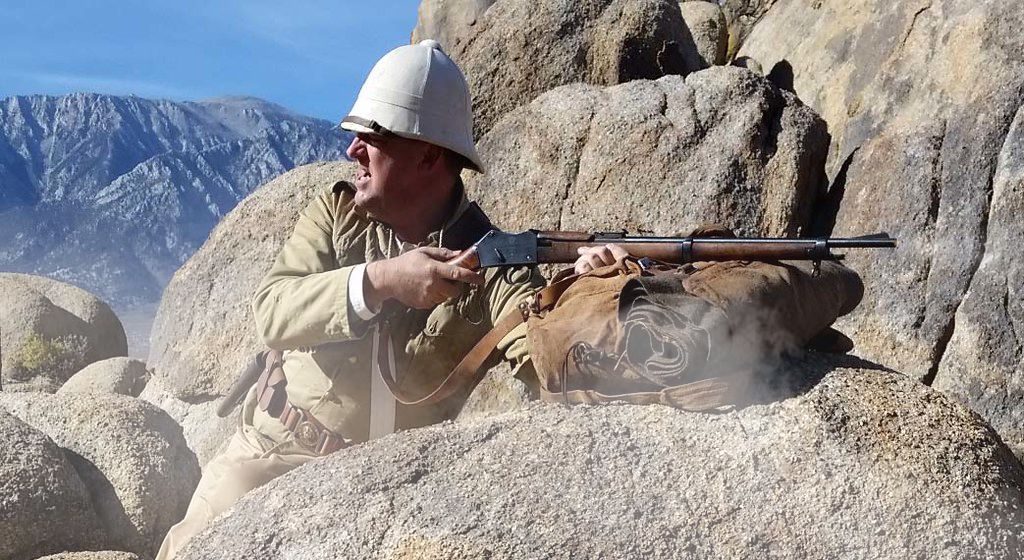
All around us, the creatures slowed in their frenzy, but still closed with us. The lead creature, groped around it’s chest, feeling for the commanding stone, then did a double take, as it saw the gem glittering in the dirt. Ducking Finnley’s blows, I quickly re-chambered and took aim. The chieftain stepped from the portal and squatted down reaching out for the glowing stone and as it did, my next shot flew true.
The globe exploded.
When we picked ourselves up, we were able to locate the flinders of gold jewelry, and many pieces of the glowing stone. As for the guardians, it seemed as the stone shattered, so did they with the sound of talons on chalkboard they collapsed where they were.
We gathered what we could of the shining stone flints and the rest of the gold diadem, and ran for the horses.
I had just swung into the saddle when I looked back and saw something rising behind Finnley…
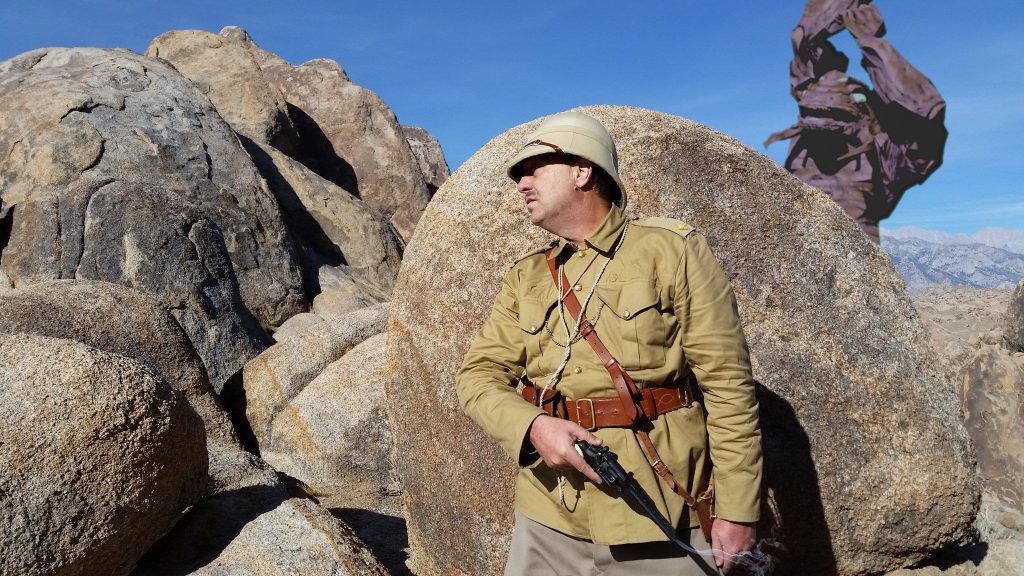
… end …
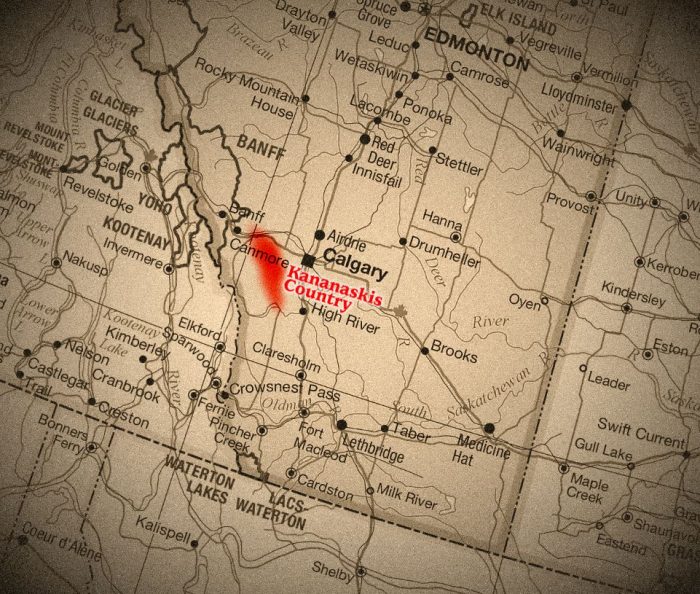

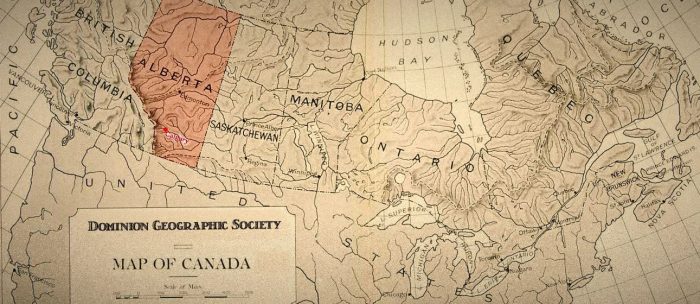






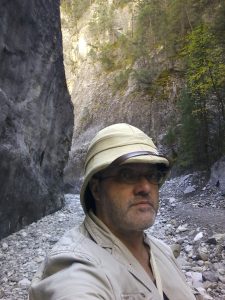 Apparently, I’d gone about it from the other side than Palliser did. I started at the clear pool and mossy bank and moved West North West before finding a gigantic washout leading to the mouth of a narrow slot canyon – this was first I’ve heard of such a place in my local region of the Bow Valley and Kananaskis Country. Initially, getting over the dried out rock to get into the canyon was quite a chore as it was worn to a polish by thousands of years of raging water. Now, though, the stream was but a trickle, mostly making its presence known through sound rather than sight. It surfaced and hid beneath the canyon floor as it made it’s way down ‘Grotto Mountain’.
Apparently, I’d gone about it from the other side than Palliser did. I started at the clear pool and mossy bank and moved West North West before finding a gigantic washout leading to the mouth of a narrow slot canyon – this was first I’ve heard of such a place in my local region of the Bow Valley and Kananaskis Country. Initially, getting over the dried out rock to get into the canyon was quite a chore as it was worn to a polish by thousands of years of raging water. Now, though, the stream was but a trickle, mostly making its presence known through sound rather than sight. It surfaced and hid beneath the canyon floor as it made it’s way down ‘Grotto Mountain’.